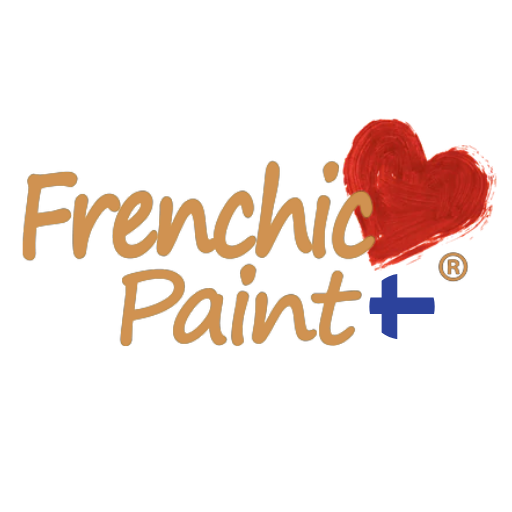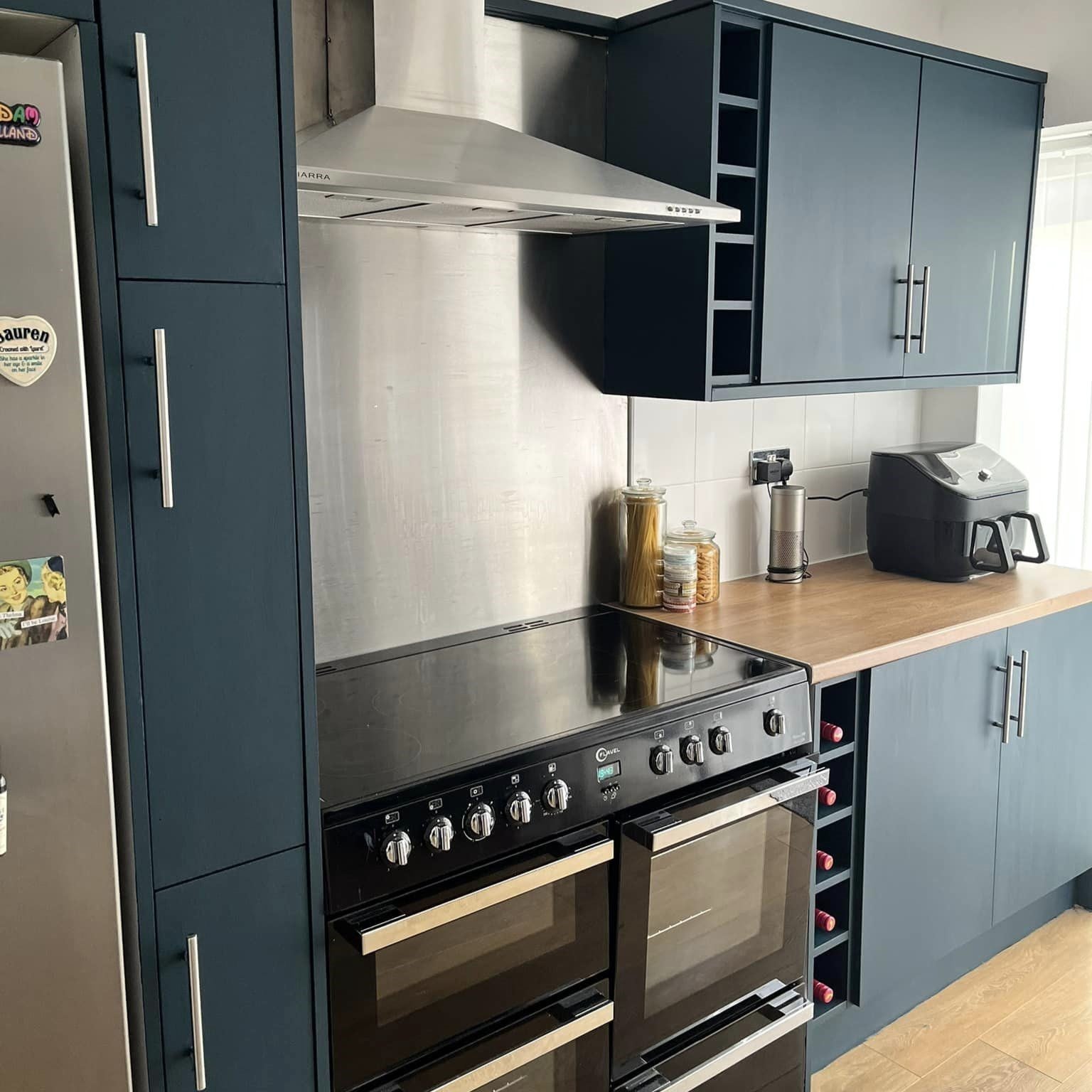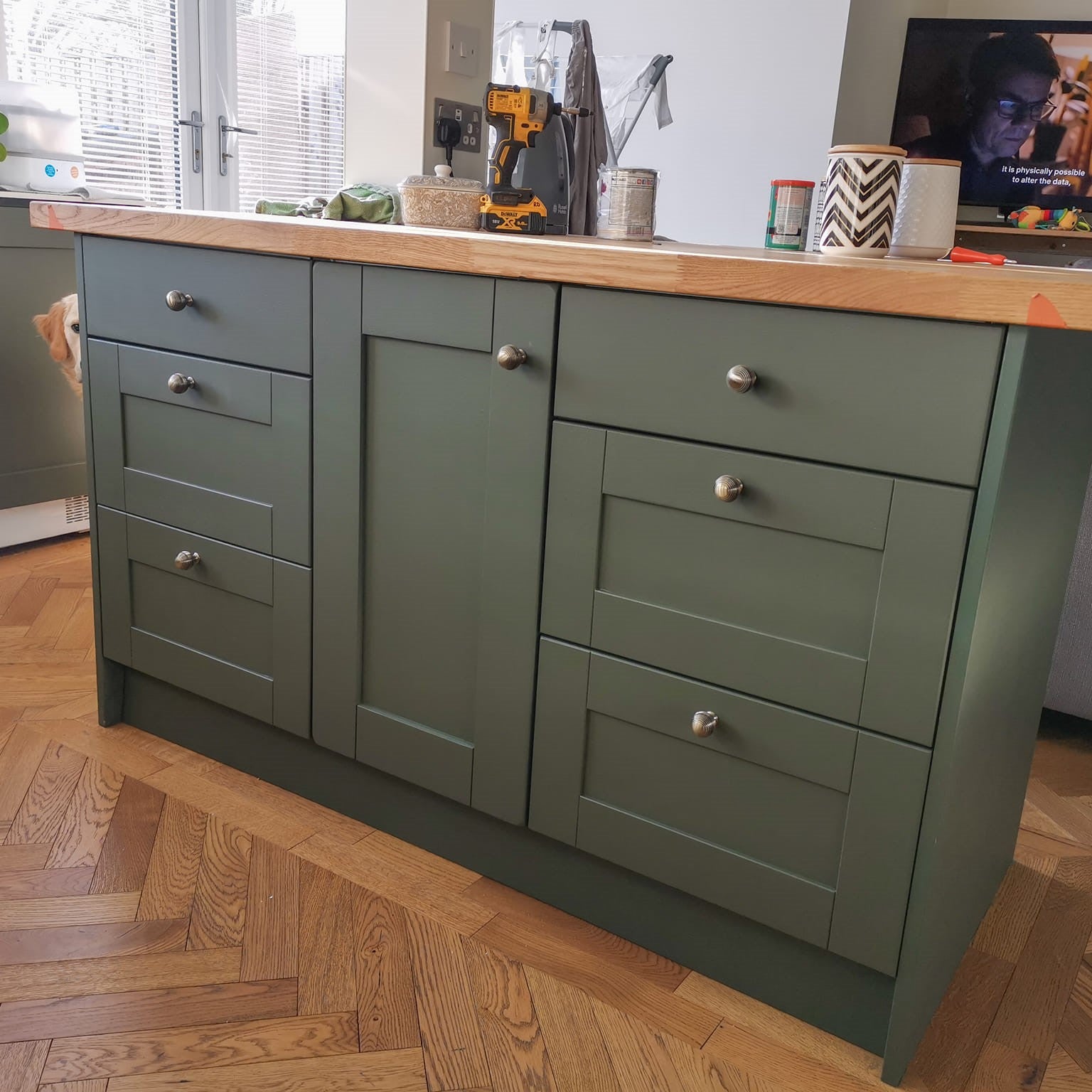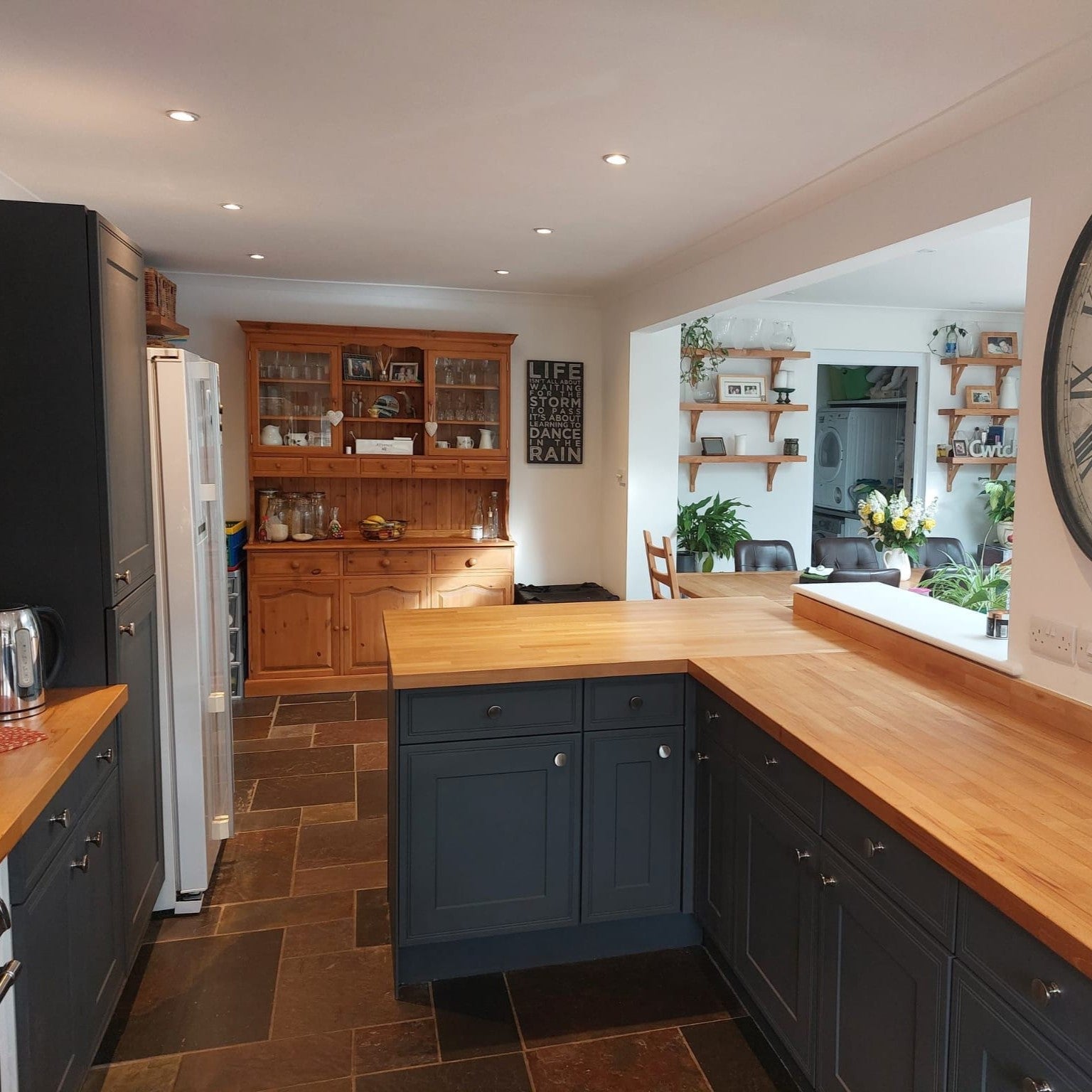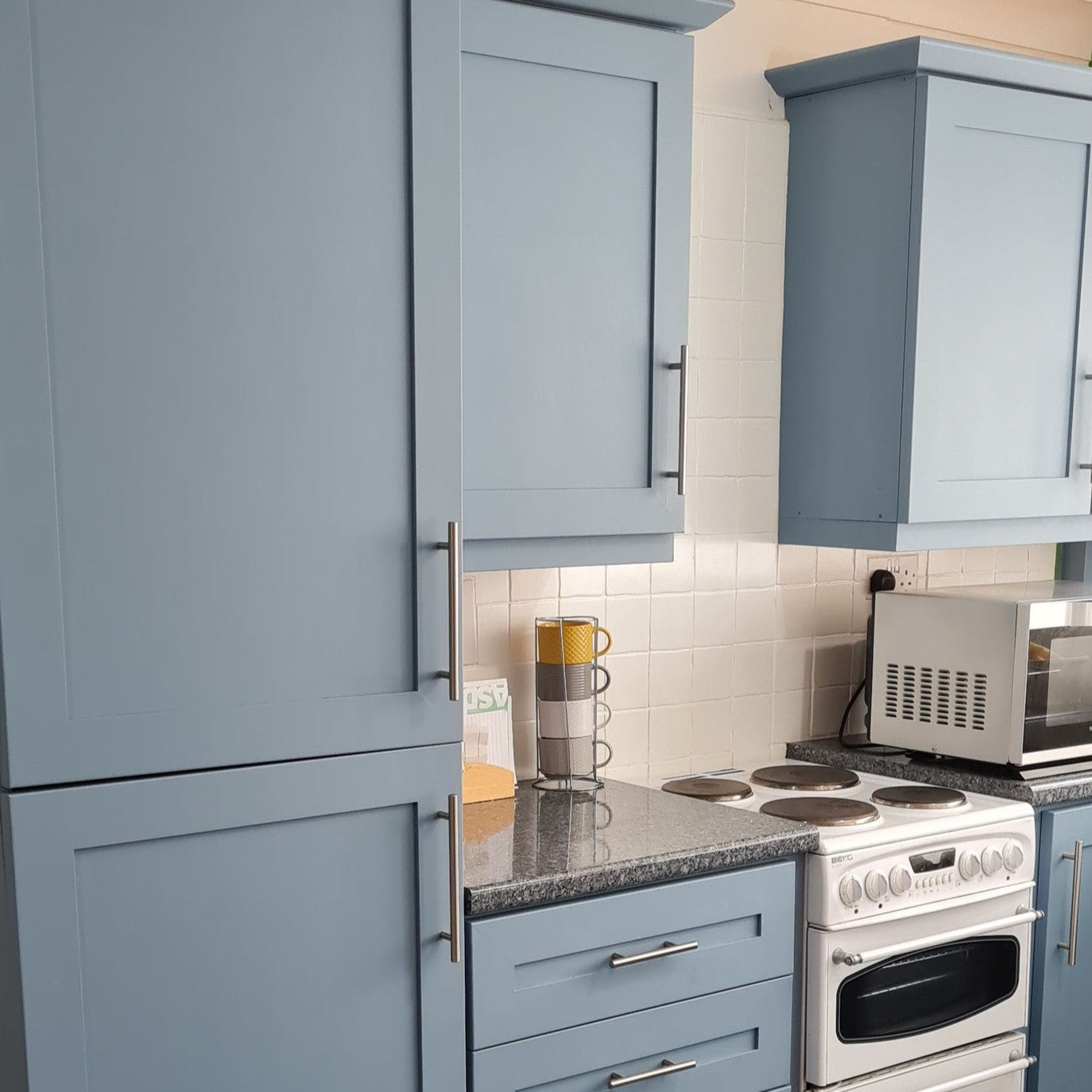Ceramic Tile Painting Tips
HOW TO PAINT CERAMIC TILES

So can you paint tiles with Frenchic paint?
The answer is a clear yes for most ceramic wall tiles, but not for floor tiles or areas that are in areas of standing water or exposed to hot steam, such as a sauna or the back of a hob.
Ceramic tiles can be painted with Al Fresco and Wall Paint series paints. Watch the video on painting tiles at the end of this blog.
However, first consider your own spending habits in that destination.
Therefore, it is worth being realistic and practical:
When deciding whether to paint your tiles, it is wise to consider the need for maintenance over time.
Read our instructions and tips on how to best succeed and what to consider here. At the end of the blog post you will find a video on painting ceramic tiles.
It's easier than you think - just follow our instructions
The tiles in the picture below are painted in the dark gray Smudge shade from the Al Fresco series, and an easy-to-clean and inexpensive, clear glass plate has been installed to protect the paint surface from hot steam.

Photo: Tiles: Smudge, Al Fresco . Kitchen cabinets; Swankypants, Al Fresco
Ceramic tiles are durable and a popular surface material
Tiles provide a water-resistant surface for bathrooms and kitchens, as well as other spaces. As times and styles change, it may be time to take a look at the tiled surfaces in your home. While you can easily change the style of the rest of your home with color, can the same be true for tiled areas, and what benefits could that bring?
Why would you want to paint tile surfaces?
For many, it's just about looks.
Because ceramic tiles are so long-lasting and durable, many homes have tiles that were installed several decades ago.
It is natural for these tiles to look dated over the years. It could be an old-fashioned color or even an outdated pattern. Painting over the tiles offers a fresh new look in the color of your choice.
Additionally, you can think about cost and convenience.
If you want a change, removing tiles from a wall can be messy, time-consuming and expensive - especially if you want to replace them with new tiles.

An alternative could be to paint the tiles.
You can paint existing tiles with a suitable paint product, such as the Al Fresco range . This is an effective way to make the surface new without having to resort to the disruptive removal process.
Painting is a low-budget change that you can do yourself. Compare the price of a can of paint to new tiles and the cost of demolition & installation.
Finally, it's worth considering the benefits of painting tiles versus removing them entirely.
There's a good reason why tiles are a popular choice for demanding rooms like kitchens and bathrooms. They're durable, water-resistant, and impressively long-lasting.
Painting as an alternative to removing tiles means you will benefit from these features for a long time to come.

This is how you paint ceramic tiles:
- Clean the surface to be painted thoroughly by washing and finally rinse the detergent film off the surface to be painted,
- Sand lightly. Clean the surface to be painted once again to remove any sanding dust.
- Then paint at least twice: without overloading the brush or roller, paint the first coat, wait two hours before applying the second coat.
- Handle fresh paint and newly painted surfaces very carefully for two to three weeks until the paint has time to harden sufficiently and reach its full hardness.
Cleaning the painted surface
You can clean the tiles in everyday life with a mild detergent, but avoid scrubbing, abrasive cleaning tools, steam cleaners and strong chemicals such as descaling agents, disinfectants or bleach.
Choose from two Frenchic tile paint series
You can paint the tiles with either wall paint series paints or Al Fresco series paints. These Frenchic series paints are the manufacturer's officially tested and approved paint series for ceramic tiles.
The difference between the series is:
- Gloss level: The wall paint has an ultra-matte finish.
- Container size: The wall paint container size is 2.5 liters. The Al Fresco series container size is 750ml or 250ml.
Surface preparation is an important step
Preparation is key to getting the best results when painting tiles - this applies to other painting projects as well.
Neglecting the primer is the most common cause of failure in painting jobs.
Before starting the project, the surface must be in good condition. This means a clean, dry and intact surface. Check that the tiles are intact.
Replacing old silicone seams with new ones is convenient at this point, and you will get a finished result.
We recommend always using products from the same manufacturer for the same project:
Wash the surfaces thoroughly, rinse and allow to dry thoroughly, then proceed with roughening the surface.
Although this step may seem difficult, it is worth it.
The detergent used must still be rinsed off the surface before painting. The detergent film prevents the paint from sticking to the surface of the tile.
Clean, dry and wipe away dust and you're ready to paint.
When painting tiles, use a light hand and avoid applying too thick layers of paint.
We recommend reading the instructions in the product instructions for use before the project and following them, including the drying times given between coats of paint.
Aftercare for painted tiles
Once the tiles have been painted, the paint must be allowed to cure to its full strength. Handle the surface carefully for about three weeks until the paint has fully cured.
We also recommend that you do not let the painted area get wet for at least a week. In the future, clean painted surfaces with a mild detergent and avoid harsh chemicals and scrubbing.
Inspiration for painting tiles
If you've decided to paint your tiles, our Al Fresco and Chalk Wall Paint collections offer a range of colours to choose from. But how you use these colours is entirely up to you.
One of the most popular options is to simply choose one color and paint the tiles for a clean, even finish. Choose a modern, versatile gray or a bold shade like blue or green.
Refresh with white or choose dark drama with black!
Alternatively, you can create a stunning look by simply using alternating colours on the tiles. Black and white provide the ultimate monochromatic contrast for the classic Victorian style, but you can mix and match any colour to make the style your own.
Another interesting point is seaming.
We're all used to the appearance of grout lines in tiled areas. But when painting over tiles, the quickest and easiest way is to ignore the grout lines and paint the entire area, as avoiding the joints can be time-consuming and laborious.
The finished, painted look means that the grout lines are less defined and tend to blend together, meaning the look of the area is quite different - increasingly unified and modern.
Some people love this look, but if you prefer a traditional look, there are grout markers available that allow you to retouch grout lines.
If you want a completely new and personal style for your seams and like meticulous work, you can tint and paint the seams in a metallic shade with our FrenSheen colors!

Image: Copper-toned Frensheen, in tile seams
Washing and cleaning is always important before painting
Careful preparation and groundwork are always the key to a successful outcome.
Clean the surface to be painted and the seams from mold, dirt and grease with Frenchic'n Sugar Soap , then rinse/wipe the cleaner off the surfaces with clean water.
Silicone joints and seals should be replaced with new ones, not painted.
Sand the surface of the tile lightly to ensure that the paint adheres. Ceramic tile can be sanded with a special diamond sanding pad or mechanically.
Don't tape over fresh paint.
Choose a high-quality tape intended for painted surfaces for marking and taping.
Paint lightly with a brush or roller
A small roller is a quick tool for covering larger areas, and also get a quality brush for edges and corners.
With versatile and high-quality tools, your painting project will go smoothly. Read more tips on choosing a brush here.
For example, a 10mm mini roller is suitable for quickly painting the first layer.
Remember to mix the paint thoroughly before painting.
Treat the painted surface gently
When cleaning painted surfaces, use only mild detergents and avoid steam cleaning, scrubbing, and harsh chemicals such as descaling agents, bleach, and disinfectants.
If a sharp object falls on a painted surface, any paint surface can be scratched. In this case, maintenance painting is a normal repair measure.
Set aside time for the project and do a test painting first.
Schedule your painting project so that the paint has a chance to dry peacefully for the first 48 hours before careful use.
Handle the painted surface with care for three weeks, allowing the paint to harden sufficiently. Moisture resistance is achieved with two intact coats of paint.
We recommend testing the shade before a larger painting project, order a small sample can and try the shade on an inconspicuous spot in the area you are painting or do a test painting on a loose tile.
This way you can easily see the opacity of the shade you have chosen on the surface to be painted and get an idea of how much paint you will use.
If there is a large difference in tone between the surface to be painted and the selected tone, more coats of paint may be needed than normal.
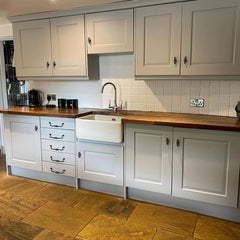

What is Al Fresco or our wall paint not suitable for?
Al Fresco or Chalk Wall Paint is not suitable for areas with standing water, such as inside bathtubs, shower trays, sinks or countertops, or in saunas. Not for exposure to high humidity or hot steam, such as near an oven, without additional protection such as a glass plate or similar.
Not for waxed or oiled tiles, cork floors, tiled floors or oiled or waxed wooden surfaces.
Frenchic paints cannot be used as waterproofing. Al Fresco or Chalk Wall Paint are not certified wet room paints.
Our customers who have painted surfaces and objects other than those officially recommended are aware of the instructions and have done the work at their own risk.
However, if you decide to paint the floor tiles or the back of the oven/stove in the kitchen, or any other heavily stressed surface, at your own risk and in accordance with official guidelines, be prepared for maintenance painting.
We officially do not recommend painting floor tiles.
However, our customers have successfully painted floor tiles. Floor tiles can be more challenging because the pressure from wear is greater than on walls.
Naturally, a kitchen tile floor is hard from moving chair legs, and a hallway tile floor is hard from sand, shoe heels, or pet claws. If the area is protected by a rug, the wear pressure is minimal.
Be realistic in your painting decision and always consider consumption based on your own family's usage.
If you have decided to paint the floor, it is best not to walk on the area for at least the first four hours. For example, schedule the painting job for the evening, so the paint can dry overnight.
For the next seven days, we recommend walking on the painted surface only with socks on and keeping pets' paws and claws away to avoid damaging the finish.
Avoid using a scratchy vacuum cleaner nozzle or similar cleaning tool when the paint is still fresh and soft. It is not recommended to use a steam cleaner for cleaning painted surfaces and for everyday cleaning.
In any case, due to the nature of floor wear, you may need to maintain the paint surface, especially in the hallway, where sand and gravel get carried away and scratch the paint surface.
If desired, you can add a finishing coating to the surface.
Check out the FB group's search function to see what others have painted (magnifying glass at the top of the page) ❤.
Here you can read useful Painting Instructions . You can also always find painting instructions on the side of the paint can.
For painting wooden floors, we recommend the Chalk Wall Paint series, or if you use other series or stencil the floor, finish the surface with a Finishing Coating.
Watch the video to see how to paint ceramic tiles.
If desired, you can add a finishing coat over the dry paint surface.
We recommend the Finishing Coating for finishing floor painting or protecting stencil patterns on tiles, for example.

Finishing Coat is applied with a sponge and dries clear and shiny. The surface becomes splash-proof.
Or go matte: The new ' Tuff Top Coat ' is a matte finish. Read more about water-based Frenchic coatings.

General information about the Al Fresco series:
-
Water-based
-
For indoor and outdoor furniture
-
Made for painting wooden furniture - Chalk & Mineral paint: for laminate, powder coated radiators, UPVC and ceramic wall tiles (we recommend avoiding very wet areas such as shower/bathtubs, sinks).
-
Also suitable for interior walls - in this case, thinning by approx. 5-10% with clean tap water is recommended.
-
Also suitable for indoor wood, concrete and most laminate floors, when added as directed - note that in these situations it may be necessary to maintain the surfaces according to wear.
-
Minimal VOC content, low odor
-
Ingredients: chalk, clay, titanium dioxide, resin, talc, preservative
-
UKCA and EN71-3 certified (safe for use in children's toys) EN71-3: 2013+A3: 2019
-
Self Priming - no primer or adhesion primer required
-
Self Levelling - little to no brush marks
-
Self Sealing - does not require varnish or wax for durability
-
Gloss level: - soft, almost matte
Coverage:
-
A 750 ml can is enough for up to 12.5 m2.
-
A minimum of 2 coats are required to achieve a durable finish, so a 750 ml can of paint will cover over 6 m2 in two coats.
-
Porous or uneven surfaces such as bare wood or MDF tend to absorb paint, meaning that additional coats are likely to be required to achieve a durable finish. In this case, a 750ml can will cover less than 6m2. Applying the paint too thinly can affect durability.
-
If the difference in tone between the surface and the selected shade is large, additional layers may be required.
-
Unmixed paint does not cover well, read more working instructions in Painting Instructions.
Preparation:
-
Make sure that the surfaces are in a suitable condition for painting - clean, dry, free of wax, grease and other substances and in good condition.
-
Remove loose or flaking old paint.
-
Wash and clean the surface, rinse and dry thoroughly.
-
Roughen the surface by hand or sand mechanically.
-
Wipe away the dust and paint on a clean and dry surface!
-
Watch the video about the preparations with Finnish subtitles.
-
Be careful when opening the can lid - we recommend using a Frenchic paint can opener.
-
Mix the paint thoroughly with a wide utensil before and during a long painting project.
Painting, paint drying and hardening:
-
Avoid painting in direct, hot sunlight.
-
The best weather for painting is when the air and surface temperature is 10–32 oC and the humidity is below 85%.
-
Avoid painting outdoors if there is a likelihood of rain, frost, fog or moisture condensation during the drying period within the next 48 hours, or if the temperature is likely to drop below 10 degrees.
-
Wood surfaces in particular can retain moisture for up to 48 hours after rain or preparation.
-
Make sure the objects are dry before painting.
-
Only paint outdoor furniture that you can store away from the weather during the winter. Read how to succeed in outdoor painting on Frenchic Blogs!
-
Use only clean, undamaged and high-quality tools for painting; a brush or roller.
-
Also suitable for spray painting - thin up to 10-15% with clean tap water, depending on the equipment.
-
Allow the paint to level out and the 'Self Levelling' feature to activate, avoiding overworking the paint.
-
There must be at least 2 hours between coats (even if the paint feels dry to the touch).
-
The paint surface will reach its final hardness in 2-3 weeks under normal conditions. Handle the newly painted surface carefully until the hardening is complete.
-
Avoid scratching and damaging the newly painted floor and avoid walking on the painted area completely for 4 hours after painting and then without shoes for the next 7 days. Also, try to keep your pets' claws off the freshly painted area while the paint is drying and curing. Do not let the surface get wet for at least a week. Continue to treat carefully for up to 3 weeks. In the future, care for your painted floor with non-scratch cleaning products and mild detergents.
Storage and cleaning:
-
Always close the paint can lid tightly after use.
-
Protects paint cans from needles, pollen and other debris when painting outdoors
-
Clean spills immediately with warm water.
-
Wash brushes in warm, soapy water immediately after use.
-
Do not store paint cans in a location where the paint may be exposed to moisture, frost, freezing or high temperatures.
Instructions for choosing a shade:
-
We strive for the best possible accuracy with the shade swatches on our pages. However, we cannot always guarantee perfect color reproduction, as shades may appear differently due to different devices, screen types and device settings. In addition, colors may appear differently in your home due to lighting and environment, and they may appear differently depending on the texture and porosity of the surface. The best way to choose a shade is to visit a Frenchic retailer to see the shades live or order a small 250ml sample can and try the paint yourself at home.
-
-
Make sure you have enough paint to complete the project. Standard industry advice is that if you need more than one can of paint, make sure they are from the same batch number or, if that is not possible, mix the paint batches before painting to ensure a consistent finish.
-
One coat of paint or thinned paint can have a negative impact on durability.
-
Porous and uneven surfaces, such as MDF, fiberglass wallpaper, wicker surfaces or raw boards, usually require a little more paint than the instructions say. All paints in the Frenchic series are painted at least twice.
-
Only check the shade when it is dry, after applying the two coats as directed.
Remember that the nature of colors changes depending on the lighting and the adjacent color. The color also repeats differently on horizontal or vertical surfaces.
-
The paint mix and the color of the base being painted also affect the coverage, tone reproduction, and coverage.
-
Painting instructions and inspiration:
